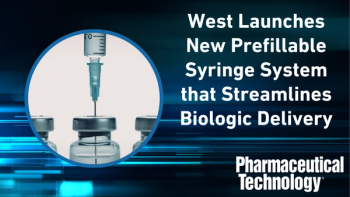
Follow-on Biologics: Is It All the Same to You?
"In my experience, you can generally tell where a person stands on the issue by the example he gives," said Art Mlodozeniec, PhD, a panelist at the Nov. 7 roundtable on follow-on biologics at the AAPS Annual Meeting in Nashville, Tennessee. "If he brings up human growth hormone and says the processes and impurities are easy to control, he's from the generic industry and supports approval for follow-on biologics. If he brings up the challenge of of erythropoeitin, he's from the innovator industry and opposes generics."
"In my experience, you can generally tell where a person stands on the issue by the example he gives," said Art Mlodozeniec, PhD, a panelist at the Nov. 7 roundtable on follow-on biologics at the AAPS Annual Meeting in Nashville, Tennessee. "If he brings up human growth hormone and says the processes and impurities are easy to control, he's from the generic industry and supports approval for follow-on biologics. If he brings up the challenge of of erythropoeitin, he's from the innovator industry and opposes generics."
The hot debate over follow-on biological products centers on whether a product made by a different synthetic route can be proven to be equivalent to the original. In other words, Does the process equal the product?
This question has raised a lot of tough issues. During this two-hour open discussion, the audience and panelists asked, for example, What analytical tests, animal testing, or human clinical trials should be required of companies that seek approval for generic biologics?
To illustrate the complexity of the question, panelist Charles E. DiLiberti presented a list of tools for analyzing product differences, with physical and chemical characterization at the top, methods such as biological characterization and pharmacokinetics studies in the middle, and clinical studies at the bottom. "The sensitivity to product differentiation is the highest for the tools listed at the top, and lowest for clinical trials," he explained. "On the other hand, the clinical relevance of differences detected is the highest at the bottom of the chart, and decreases as you go up." This means that various types of testing may produce results indicating different degrees of similarity between two products. The greater challenge lies in determining whether differences mean that the follow-on product is not as safe or effective as the original.
Regulatory answers to the question also may be a long time coming. The US Food and Drug Administration has delayed issuing guidance on the topic, and it is unclear whether the agency will meet its latest deadline of publishing a draft by the end of 2006. The European Agency for the Evaluation of Medicinal Products has issued seven draft guidances (three general and four product-specific), but has yet to approve a follow-on product.
There is also a lot at stake. During his presentation, DiLiberti identified 71 distinct products with annual US sales of at least $20 million each that are potential targets for follow-on biologics. The total sales value of these products is approximately $34 billion a year, DiLiberti said.
Of those, 41 were approved through biologic license applications, for which there is currently no established path for applying for generic approval.
Participants in the symposium were:
Moderator:
Robert G. Bell, PhD, Drug & Biotechnology Development, LLC
Panelists:
Charles E. DiLiberti, Barr Laboratories, Inc.
Arthur Mlodozeniec, PhD, Pharm Consultants Inc.
Newsletter
Get the essential updates shaping the future of pharma manufacturing and compliance—subscribe today to Pharmaceutical Technology and never miss a breakthrough.




